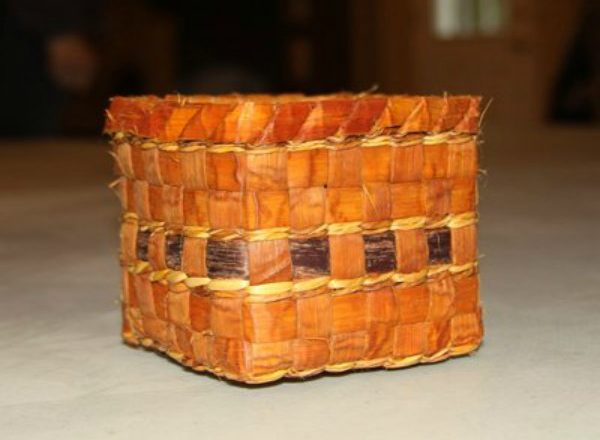Native American basket weaving was practiced by many different tribes for various uses. They can be used for food gathering, processing hides, cooking, water containers, sifting seeds, processing clay, drying meats and fruits, shelter, clothing… and much more! Have you ever thought about how our clothing is just a well-made basket with tiny, tiny weaves? It is!
In this article I’m going to discuss three very common and basic techniques for basket making. I’ll also discuss some other options for natural containers.
Native American Basket Weaving:
Plaiting
This is perhaps the most classic technique which most people picture when they think of as Native American basket weaving. These baskets can be beautiful but also very rugged and sturdy. They are often made out of flat slats of material such as oak or ash splints, river cane, and cedar.

Plaiting is very simple. Start with the base and weave the slats together in an over-under pattern. Each following slat should go over where the previous slat went under. At some point you will fold the slats upwards and start on the sides. Continue adding slats, working your way up as high as you’d like to go. To finish the rim you can fold the slats back down and tuck them under a previous slat. There are infinite variations, beautifying additions, and more advanced techniques.
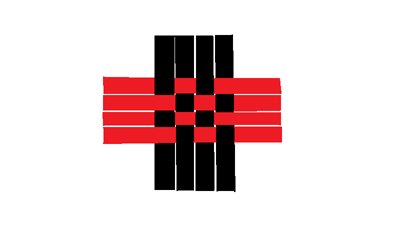
Twining
Twining is a very common technique in traditional Native American basket weaving. It is also used to make blankets, sandals, mats, nets, sacks, capes and shirts. As you can see in the diagram, it works by threading two or more horizontal strands (the weft) between the verticals (the warp). Of course there are many variations on this technique as well.
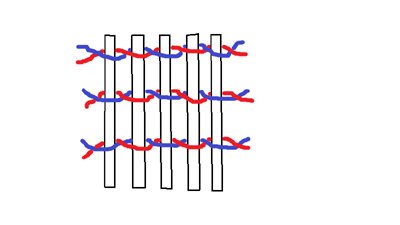
This same technique can be used with round, slightly stiff material like willow to make quick and practical survival baskets. Use long, straight, flexible twigs that are seasoned but soaked in water for several days so that they can bend without breaking.
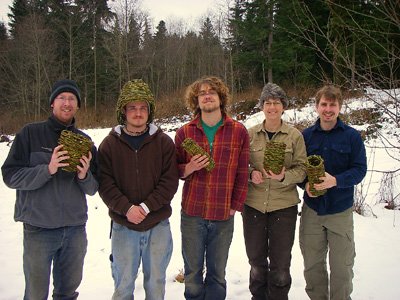
Coiling
Coiling is another method that is very common in traditional basket making. It was often done using grass stems for the central piece, wrapped with split rootlets from plants such as sedge, fern, or conifer trees. The central piece could also be thin willow branches, or pine needles. This method can be used to make simple pine needle baskets or it can be used to make some of the most beautiful complex baskets – even ones that are waterproof!
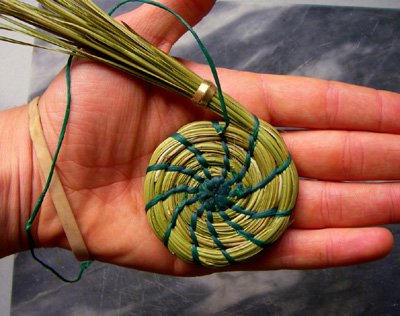
Other Simple Containers
There are many other simple methods for containers that primitive people have employed for thousands of years similar to Native American basket weaving. Flat pieces of bark or hide can be folded and used to make a countless variety of useful containers such as bowls, buckets, quivers, shelter, mats, etc.
Other options are a folded leaf, a hole in the ground lined with hide, an animal stomach, gourds, sea shells, turtle shells, coal burned logs, or simply a boulder with a depression in it that holds water.
A simple and quick way to make a useful and versatile container is to take a wet piece of rawhide, fill it with pebbles, bunch it together and tie it shut. When it is dry it will be a ready to contain practically anything you can fit in it!
There is something about the aesthetics of baskets that everybody loves. It is a fun and satisfying craft project and can connect us to the land as we search for and gather materials. It can connect us to our ancestors who, no matter where in the world we are from, made and used baskets. Finally, it is an art form that when mastered is simply awe inspiring, like this coiled Apache basket from the J. W. Powell collection:
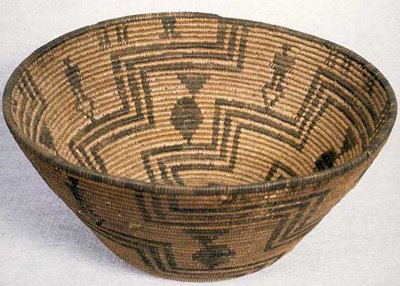
I hope this article has given you some insight into the basics of basketry and inspires you to experiment with your local materials to make something useful and beautiful!

source : Connor O’Malley

